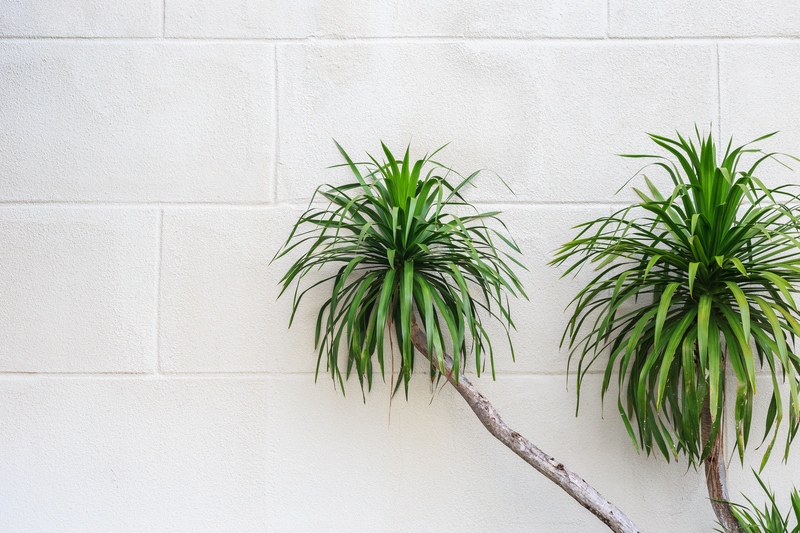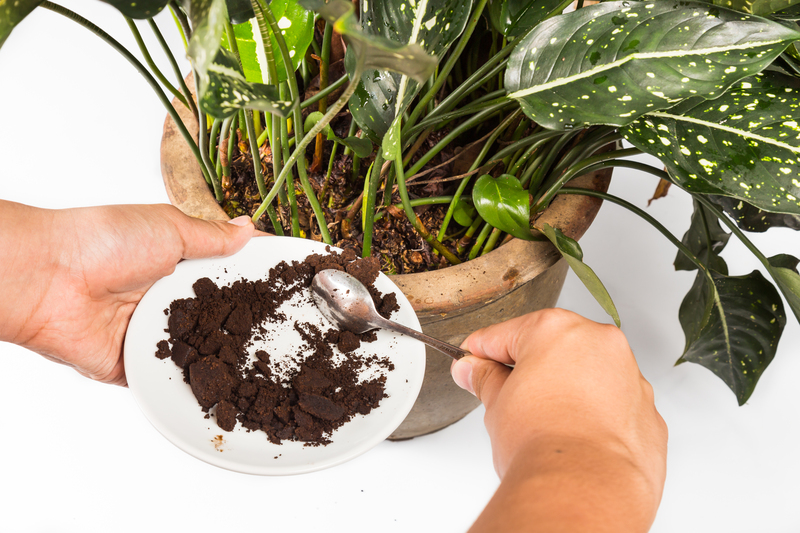The Complete Orchid Care Cheat Sheet
Posted on 19/05/2025
The Complete Orchid Care Cheat Sheet
Orchids are among the most captivating and diverse flowers on earth, boasting over 25,000 species and thousands of cultivars. Their vibrant blooms and unique forms make them a favorite among plant lovers. However, many people consider orchids to be fussy or difficult to care for. With our comprehensive orchid care cheat sheet, you'll discover that nurturing these exquisite plants is both rewarding and attainable. This guide covers every aspect of successful orchid care, from choosing the right species to mastering water, light, humidity, and more.

Understanding Orchids: Know Your Plant
Before diving into care routines, it's crucial to understand the basic types of orchids. Each type differs in habitat, preferences, and maintenance needs.
Main Categories of Orchids
- Phalaenopsis (Moth Orchid): The most popular, easy-going, and beginner-friendly orchid. Known for long-lasting blooms and wide availability.
- Cattleya: Valued for their vibrant, fragrant flowers--often considered the classic "corsage" orchid.
- Oncidium: Famous for their profuse sprays of colorful, often frilled little blooms.
- Dendrobium: Varied and resilient, great for both warm and cool environments.
- Vanda: Lovers of bright light and humidity, producing stunningly vibrant flowers.
Tip: Identify the specific type of your orchid to provide the most tailored care possible.
The Essential Orchid Care Cheat Sheet
Below is a practical, easy-to-reference cheat sheet filled with expert orchid care instructions. Master these essentials and you'll enjoy healthy orchids with abundant blooms year-round.
1. Light Requirements for Orchids
- Phalaenopsis: Prefers bright, indirect sunlight. Too much sun burns their leaves, while insufficient light hinders blooming.
- Cattleya & Vanda: Thrive in stronger, filtered sunlight--think east or south windows with sheer curtains.
General Rule: If your orchid's leaves are dark green, it may need more light. Yellowish leaves suggest too much sun. A healthy leaf should be a light grassy green.
2. Orchid Watering Tips
- Less is More: Overwatering is the top killer of orchids. Wait until the potting mix is almost dry, then water thoroughly.
- Water Method: Soak the roots--avoid letting water sit in the crown of the plant or in the pot.
- Frequency: Generally once per week, but this varies by climate, potting material, and species.
- Tools: Use tepid, distilled, or rainwater for best results (especially if your city's tap water is hard).
Pro Tip: Use the "finger test" or a bamboo skewer: If it comes out dry, it's time to water.
3. The Perfect Humidity for Orchids
- Ideal Range: 40% to 60% humidity is optimum for most orchids.
- Boosting Humidity: Use a humidity tray filled with pebbles and water, mist the leaves regularly, or use a small humidifier nearby.
- Air Circulation: Orchids love fresh air! Provide gentle breezes--avoid placing orchids in stagnant corners.
4. Proper Potting Mixes and Containers
-
Suitable Media:
- Orchid bark (fir bark, redwood, or pine bark chips)
- Sphagnum moss
- Coconut husk chips
- Perlite or charcoal
- Drainage is Crucial: Choose pots with ample drainage holes to prevent root rot.
- Repotting: Every one to two years, or when the media breaks down and compacts.
5. Orchid Fertilizing Schedule
- Balanced Fertilizer: Choose a fertilizer labeled "20-20-20," or one made specifically for orchids.
- Weakly, Weekly: Apply a half-strength solution every other watering during the growing season (spring/summer); less in fall/winter.
- Flush Monthly: Water the plant thoroughly without fertilizer to flush away salt buildup.
Don't overfertilize--less is more!
6. Temperature Tolerance for Orchids
- General Rule: Most orchids grow best between 65-80?F (18-27?C) during the day and 60-65?F (16-18?C) at night.
- Night Temperature: A nighttime dip of at least 10?F (5?C) can help trigger blooming in many species.
- Avoid: Direct drafts or heating vents that dry out the air and soil.
Common Orchid Problems & Solutions
Yellow or Limp Leaves
- Possible Causes: Overwatering, underwatering, or too much sun.
- Solution: Adjust your watering routine and check the orchid's placement.
No Blooms
- Possible Causes: Insufficient light, lack of feeding, or not enough temperature fluctuation at night.
- Solution: Increase light exposure, fertilize as recommended, and move the plant to a slightly cooler spot at night.
Roots Protruding from the Pot
- Good Sign! Orchids produce aerial roots naturally. If roots are healthy (firm and white with green tips), don't worry.
- Repotting: Consider upgrading to a larger pot if the plant is root-bound.
Pest Issues
- Common Culprits: Mealybugs, spider mites, aphids, and scale insects.
- Solution: Wipe leaves gently with a soapy water solution or use insecticidal soap. Isolate the plant if pests persist.
Orchid Flowering and Reblooming Tips
- Don't cut the flower stalk immediately after blooms fade. For Phalaenopsis orchids, cut just above a node--this can encourage a new spike or more flowers.
- Cattleya and Dendrobium should be pruned back only after the entire stem turns brown and dries up.
- Provide proper temperature drops at night, consistent feeding, and adequate light for more reliable re-blooming.
- Don't disturb roots unnecessary--orchids rebloom best when their root system is healthy and undisturbed.
Yearly & Seasonal Orchid Care Checklist
Spring and Summer
- Boost water and fertilizer as orchids enter their active growth phase.
- Check for pests and inspect your plant for signs of stress.
- Increase humidity if necessary and monitor light exposure.
Fall and Winter
- Reduce watering and fertilizing frequency.
- Ensure plants receive as much light as possible, as winter days are shorter.
- Maintain humidity--indoor heating can dry out the air.
- Encourage blooming with proper night-time temperature drops.
Quick Orchid Care Reference Table
| Aspect | Phalaenopsis | Cattleya | Dendrobium | Oncidium/Vanda |
|---|---|---|---|---|
| Light | Bright, indirect | Filtered sun | Bright, indirect | Bright, strong sun |
| Water | 1/week | 1/week, dry between | 1/week | 2/week, don't dry out |
| Humidity | 50-60% | 50% | 50% | 60-80% |
| Repot | Every 1-2 years | Every 2 years | Every 2-3 years | Every 1-2 years |
| Bloom Season | Winter-Spring | Spring-Summer | Winter-Spring | Any time |
Advanced Orchid Care Secrets
- Double-potting: Place your orchid in a slightly smaller, airy pot inside a decorative outer pot for both airflow and insulation--perfect for controlling moisture.
- Root Health: Healthy orchid roots should be firm and white with green tips. If roots turn mushy or brown, trim them off with sterilized scissors.
- Bloom Booster: Use a bloom-specific fertilizer in late fall and winter to encourage a new flower spike.
- Antibacterial Care: Sprinkle a small amount of ground cinnamon on any fresh cuts to help prevent infection.
Frequently Asked Questions about Orchid Care
- How often should I water my orchid?
It depends on temperature, humidity, and potting media, but generally once per week. Always let the growing medium dry slightly between waterings. - When should I repot my orchid?
Every one to two years--or when the potting mix breaks down--using a specialized orchid mix. - Can orchids grow under artificial light?
Absolutely! Full-spectrum LED grow lights are perfect for indoor orchids when natural sunlight is limited. - Why are my orchid leaves wrinkled?
Wrinkled leaves often indicate dehydration--usually from underwatering, overwatering (damaged roots), or low humidity.

Conclusion: Orchid Care Made Easy
Growing beautiful orchids isn't as intimidating as it may appear. With the right orchid care guide and regular attention to key factors like light, water, humidity, and feeding, anyone can enjoy robust, flowering orchids. Remember to always get to know your specific orchid species, be vigilant for signs of stress or pests, and adjust your care as the seasons change.
Whether you're a beginner looking for an easy orchid care cheat sheet or an experienced grower seeking advanced tips, this guide can help you grow orchids with confidence. Happy orchid growing!
- Bonus Tip: Keep a plant diary to track your orchid's watering, feeding, and blooming cycles. It's the best way to ensure ongoing success!
Related Orchid Care Resources
If you found this complete orchid care reference guide helpful, don't forget to bookmark it or share it with fellow plant lovers. Your orchids will thank you!



